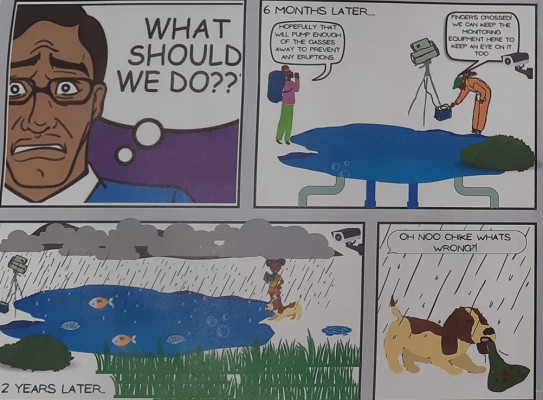Science communication and multiple knowledge systems

The Beneath the Waves program has demonstrated a deep focus and unwavering commitment to science education and Mātauranga Māori—the traditional knowledge and ways of knowing of Māori.
This dual emphasis has provided a strong foundation for volcanologist Ben Kennedy and his team of cultural and educational experts to pursue ongoing research into how integrating indigenous knowledge systems with Western scientific approaches can benefit university-level learning and help with science communication. Their work seeks to bridge cultural perspectives and enhance the educational experience for all students.
In their recent paper, "Incorporating science communication and bicultural knowledge in teaching a blended volcanology course(external link)", Kennedy and his team explore the impacts of embedding Mātauranga Māori and science communication within a tertiary-level volcanology curriculum. The study found that students reported notable improvements in their perceived learning, particularly in areas related to bicultural competence and science communication skills. These outcomes followed the introduction of interactive, skills-based activities within the course's online content—highlighting the value of engaging, context-rich educational strategies.

The research outlines several examples of innovative and interactive learning tools that were co-developed with Māori educators and cultural advisors. These included culturally grounded teaching materials, authentic science communication tasks, and assessments to encourage deeper reflection and cross-cultural understanding. In addition to enhancing learning outcomes, these approaches helped foster a more inclusive and respectful learning environment where multiple worldviews could be acknowledged and valued.
The paper also discusses how these online materials can be seamlessly integrated into a blended learning environment—combining digital content with face-to-face instruction to maximize flexibility and engagement. This approach supports diverse learning preferences and ensures that the incorporation of Mātauranga Māori and science communication becomes a sustainable and scalable part of the curriculum.
One student shared, "I feel like this part of the course has been very inclusive of what is the indigenous approach to this, what is the cultural understanding, how can we incorporate the sort of more indigenous aspects into how we approach science”
Ben Kennedy says, “The students could see how having the mātauranga taught by the mana whenua was hugely important to the authenticity of the content, and I really enjoyed working with our iwi partners from different parts of Aotearoa”
For those interested in exploring the full paper and its findings, it is available here: https://gc.copernicus.org/articles/8/107/2025/(external link).